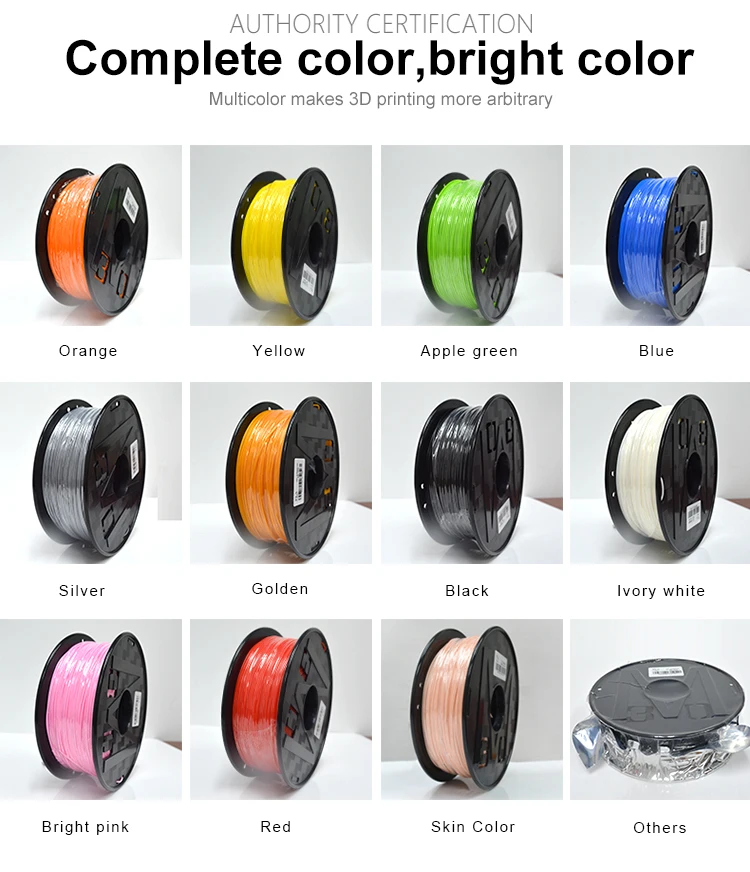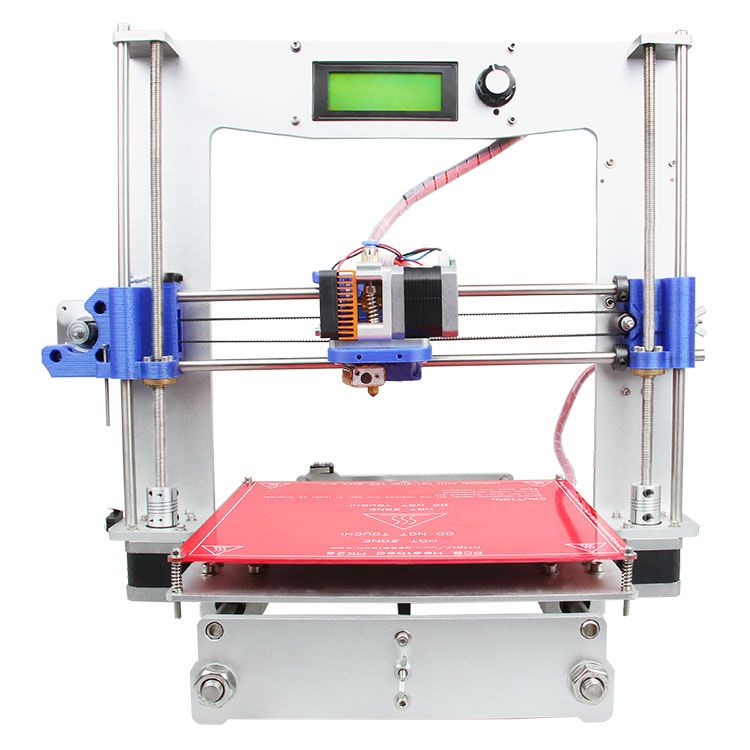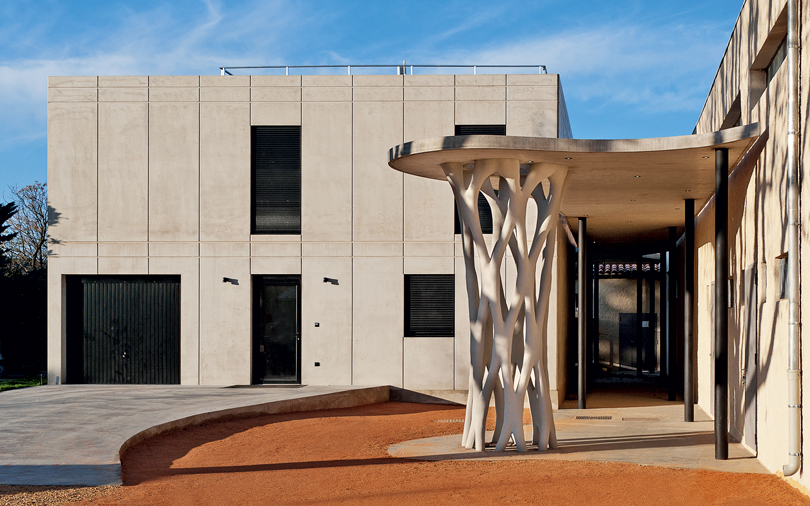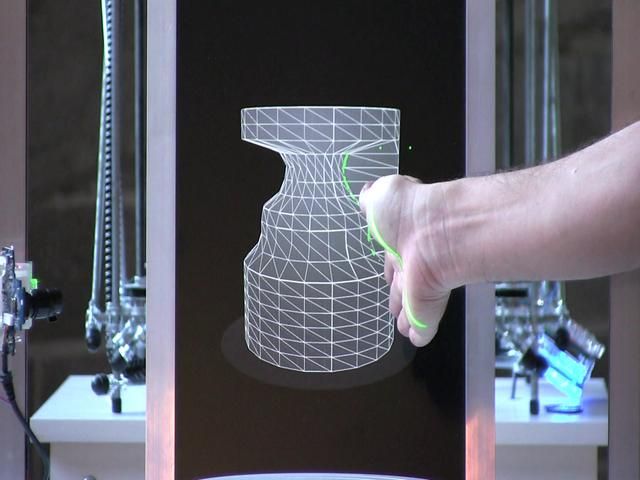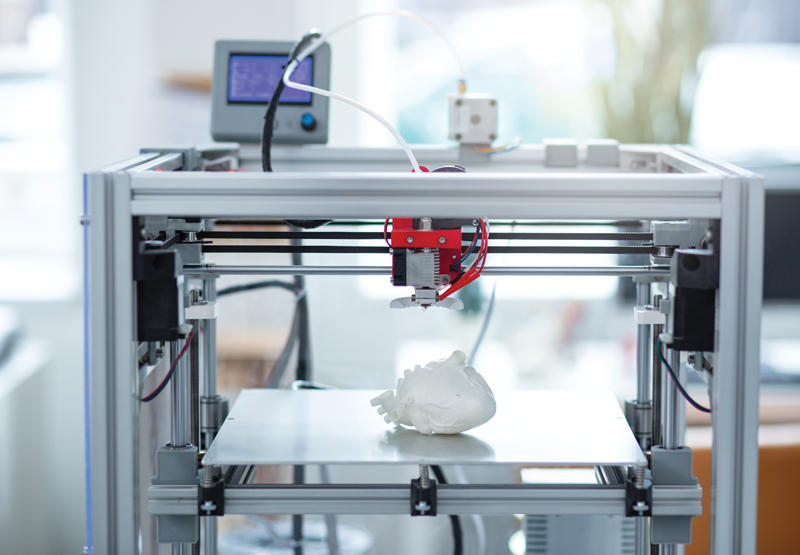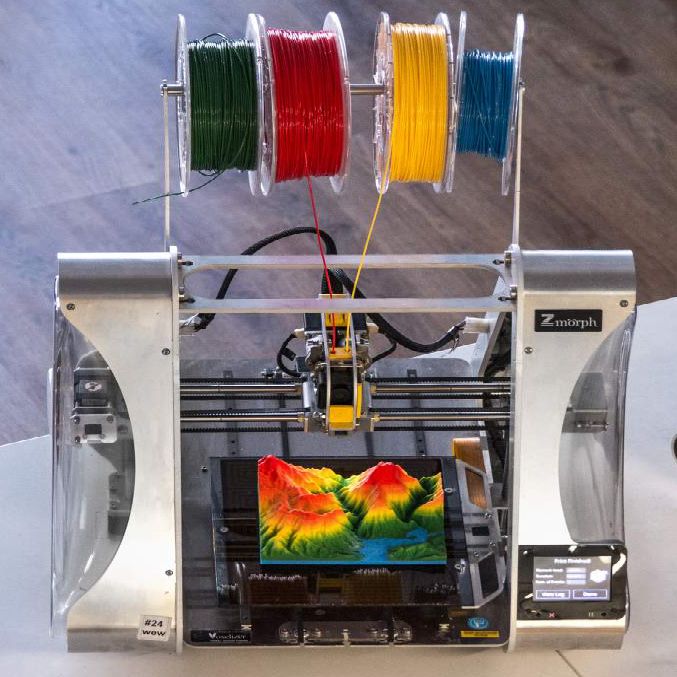3D printer sushi
Tokyo Restaurant Offers 3D-Printed Sushi Tailored to Your Health Needs
A new Tokyo restaurant called Sushi Singularity offers 3D-printed sushi that's “hyper-personalized” to each guest's health and nutrient needs. Scheduled to open this year, this restaurant by Open Meals (a Japanese company dedicated to facilitating a new food revolution) aims to revolutionize sushi by digitizing its ingredients, designs, and flavors. In addition to the restaurant's alternative method to food preparation, guests are required to submit biological samples (via a health test kit) when making a reservation. Biometric and DNA data gathered from these custom kits will inform a personalized nutrient infusion. The encoded sushi, customized to each guest's nutrient needs, is then artfully produced by 3D printers and laser technology.
This futuristic dining experience will soon be commonplace, maintains Open Meals. Sushi Singularity is an attempt to “break away from conventional concepts of food. ” The food fabrication machines, food operation system, and health identification employed by the cutting-edge restaurant will eventually be smaller and available to general consumers. Open Meals has been pursuing the digitization of food for years, making quite an impression with their Sushi Teleportation demonstration at SXSW in 2018. As the world's first data food transmission model, it opened up many minds to the idea of downloadable food.
This culinary digitization will require immense collaborative and technological efforts. According to Open Meals, food must first be encoded with complex algorithms that account for texture, taste, heat, smell, etc. Then, these encoded dishes must be made available online, through a platform entitled Foodbase. Lastly, anyone wishing to create a downloadable dish must have the correct “ingredients” in 3D printing format. While Sushi Singularity may be the first restaurant of its kind, the scientists have been 3D printing flesh and other biological materials for some time.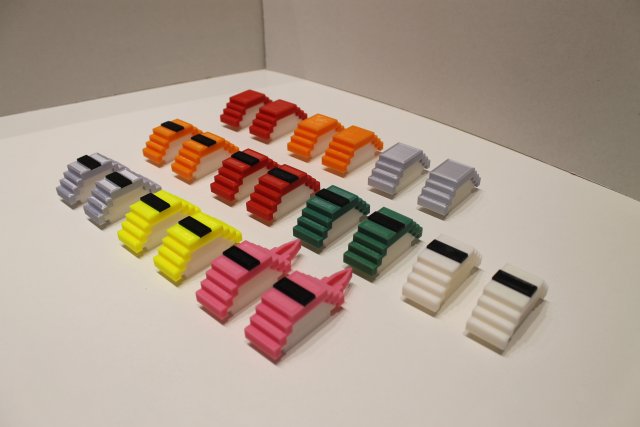 These technologies are now making their way into the restaurant industry, offering new potential for customization on a micro level.
These technologies are now making their way into the restaurant industry, offering new potential for customization on a micro level.
Much of Open Meal's projects are grounded in traditional Japanese culinary tradition. The fusion of futuristic technology and tradition can create biometric-optimized sushi. Open Meals also creates Wagashi, a traditional delicacy created to reflect nature, by encoding weather data and 3D printing this data with a food fabrication machine. Check out these projects and more on Open Meal's website.
Sushi Singularity is a Japanese restaurant set to open in Tokyo that aims to revolutionize sushi and the restaurant experience by 3D-printing meals.
Examples of 3D-printed sushi offerings.
Customers who make reservations will have to submit a kit with biometric samples to determine what nutrients should be in their meal.
The kit sent to customers to asses health needs.
Sample health profile.
The menu of 3D-printed sushi will be tailored to each guest's health profile.
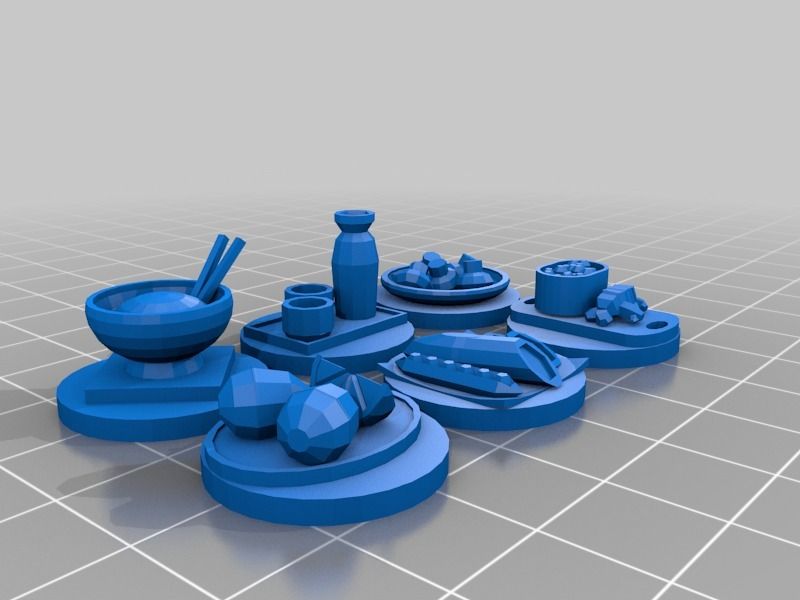
Robotic arms assemble 3D-printed sushi.
Each piece of sushi is an artful creation.
Cell Cultured Tuna Sushi
Powdered Sintered Uni
Oze Tick Kappa Roll
Squid Castle
Micro Pillar Saltwater Eel
Negative Stiffness Honeycomb Octopus
Anisotropic Stiffness Steamed Shrimp
Dashi Soup Universe
Take a look at the vision behind Sushi Singularity:
Open Meals: Website | Facebook
h/t: [Mashable SE Asia]
Related Articles:
Chef Creates “Sushi Shoes” for People Who Love Food and Fashion
Creative Dad 3D Prints Baby Yoda Valentines When He Learns Daughter’s School Banned Candy
Affordable 3D Printer Effortlessly Crafts Beautiful Ceramics in Minimal Time
3D Scans of 7,500 Famous Sculptures Available Online to Download and 3D Print
At this Tokyo restaurant, you'll be served 3D-printed sushi based on your health needs
But.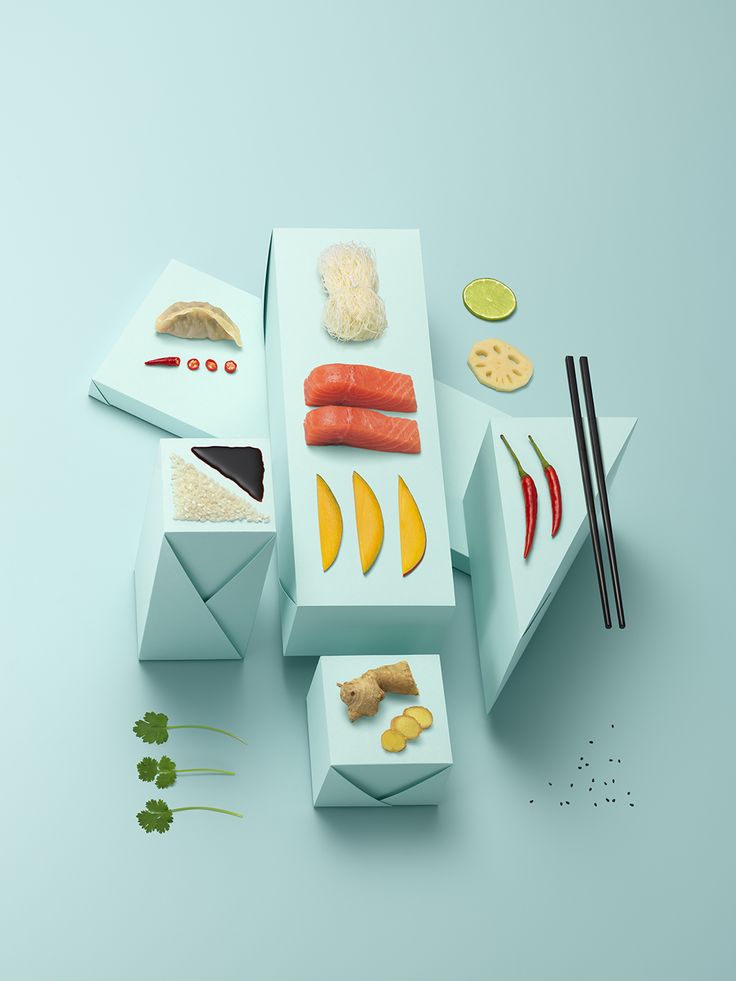 . does it taste good?
. does it taste good?
By Danial Martinus
> Tech
Sushi is an acquired taste.
While it may take some people longer than others to warm up to it, it's hard to deny that it's one of the most popular foods in the world.
And while sushi is generally considered to be a healthier alternative to other foods, this futuristic restaurant in Tokyo, Japan is taking things to another level.
IMAGE: Open MealsWelcome to Sushi Singularity, a sushi restaurant from Japanese company Open Meals. Here, you won't be eating regular sushi. Instead, each piece of sushi you put in your mouth is tailor made to your specific body and health requirements.
But how?
IMAGE: Open MealsFor starters, you can't simply walk into the restaurant and expect to be seated right away. You'll have to send them samples of your DNA, urine, and other bodily fluids first.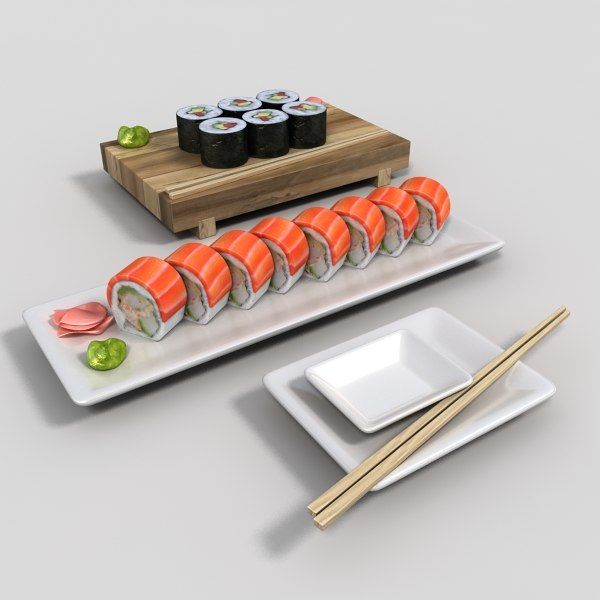 They call this your 'Health ID'.
They call this your 'Health ID'.
Conveniently, the restaurant will send you the sample collection kit to your doorstep.
Once they get their hands on your Health ID, they'll begin crafting the customized sushi using 3D printing technology.
You'll get a good dose of raw vitamins, as well as other ingredients that benefit your specific health requirements.
One of the coolest parts about the 3D-printing process is the fact that your sushi will be prepared by giant robotic arms.
IMAGE: Open MealsAnd if you haven't noticed by now, the sushi you'll be eating doesn't look like conventional offerings (see photo above), tying into its futuristic approach.
And if you're picturing cartoonish, pixelated sushi, think again.
Here's what you can actually expect to see on the menu.
Cell Cultured Tuna.
IMAGE: Open MealsAccording to Open Meals, the internal honeycomb-like structure is meant to mimic the texture and sensation of tuna muscle.
Powdered Sintered Uni.
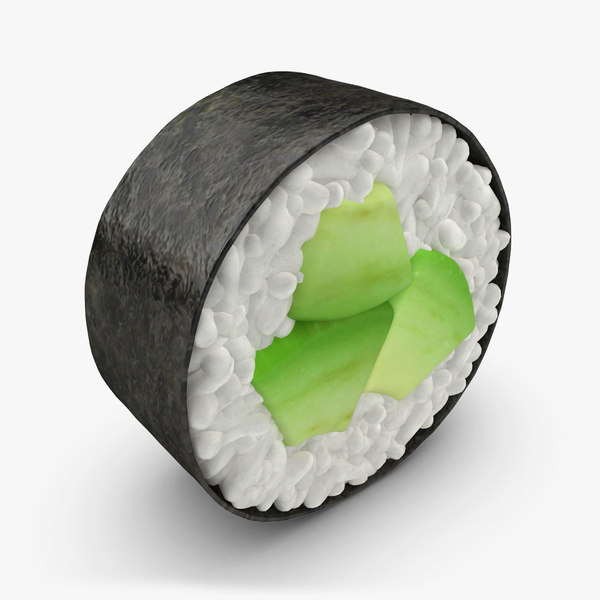 IMAGE: Open Meals
IMAGE: Open MealsTo achieve this unique shape and texture, a CO2 laser is used to harden uni powder and shape it into a motif that resembles the shell of an actual sea urchin. The spines will also help evenly distribute flavor and make it a melt-in-your mouth experience.
Negative Stiffness Honeycomb Octopus.
IMAGE: Open MealsUtilizing a design that promotes negative rigidity, biting into this octopus sushi will give you a pleasant, bouncy chew in the mouth. Or as Open Meals describes it: "The sensation of, after first biting it, disappearing, and then bouncing back."
Oze Tick Kappa Roll.
IMAGE: Open MealsUsing a lazer, the seaweed that's wrapped around the rice and cucumber is shaped into an Oze Tick, which resembles a vertical-oriented wave form.
Anisotropic Stiffness Steamed Shrimp.
IMAGE: Open MealsAnisotropy involves the changing of hardness when chewing in different directions. Using this concept, the steamed shrimp's waffle structure is firm on top, but soft on the sides.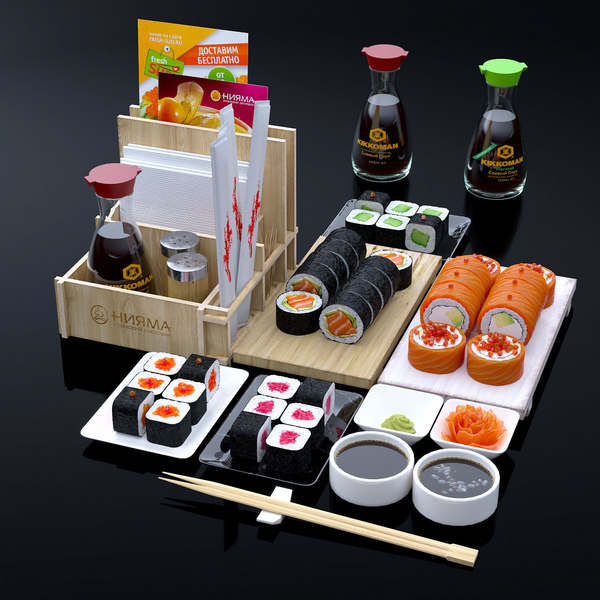
Squid Castle.
IMAGE: Open MealsMade of flash-frozen squid, the Squid Castle uses a 6-axis computer-controlled router to achieve all the minute, intricate details in its design. The bed of rice below mimics the look of a stone wall, further adding to its aesthetic.
Micro Pillar Saltwater Eel.
IMAGE: Open MealsUsing ultra-fine 3D-printing methods, this saltwater eel sushi comprises of thousands of 'hairs' that give you a truly unique, fluffy mouthfeel. Goes perfect with a dash of sauce.
Dashi Soup Universe.
IMAGE: Open MealsImagine soup (and all its furnishings) encased in a cube mould. Except this mould is made of an alginic acid and calcium lactate membrane. It looks pretty damn cool to me.
Sushi Singularity will be opening its doors in 2020.
For more information, head to their official website.
Follow Mashable SEA on Facebook, Twitter, Instagram, and YouTube.Cover image sourced from Open Meals.
Topics: Restaurant, Tech, Food, sushi, japan, 3d printing, Tokyo, Futuristic
Sushi chef needs your DNA to create personalized 3D printed food
You are here
Home
3D printed food is always admired by readers (and writers).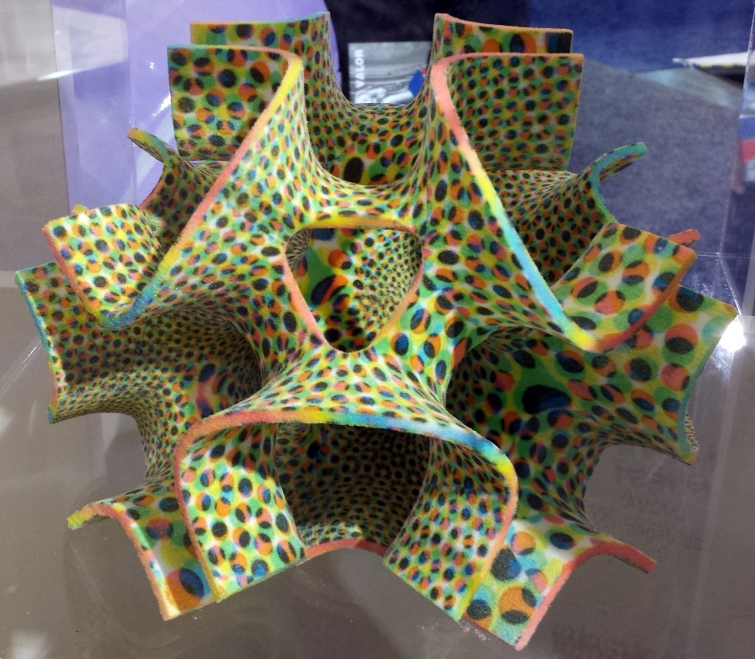 Perhaps you decided to read this article because you love 3D printing, you love sushi, you were just hungry - or all three of the reasons. However, the triumph of 3D printing in the food industry is surpassing the joy of the gastrointestinal tract as dollar signs flash with the prospect of profitability in a field that could grow 40 percent annually and become a $500 million industry by 2023. nine0005
Perhaps you decided to read this article because you love 3D printing, you love sushi, you were just hungry - or all three of the reasons. However, the triumph of 3D printing in the food industry is surpassing the joy of the gastrointestinal tract as dollar signs flash with the prospect of profitability in a field that could grow 40 percent annually and become a $500 million industry by 2023. nine0005
Pictured: Robotic arms preparing sushi
Sushi Singularity, a restaurant in Tokyo scheduled to open this year, is jumping into the personalization trend with a "hyper-personalized" menu. And just as 3D printing is often called a revolution in the industrial market, Japanese company Open Meals plans to revolutionize sushi through digital manufacturing - and individual DNA research.
If you plan to enjoy some of the new sushi ingredients and flavors offered by Open Meals, you will need to provide them with a biological sample at the time of booking. Their team will then examine your biometrics so they can give you a "personalized nutrient infusion" - all via sushi!
Their team will then examine your biometrics so they can give you a "personalized nutrient infusion" - all via sushi!
Guests can look forward to Asian dishes that are not only beautifully presented but also fully adapted to the needs of their bodies. Open Meals has been running not only on a whim, but for years. nine0005
Surely, if there is any way to introduce people to the wonders of new technology, it is through their stomachs. The downloadable dishes intended to be made available to the public on the Foodbase platform will be created using detailed algorithms responsible for obtaining the proper taste, smell, temperature and texture. And while 3D printing of flesh or organs may not be suitable for dinner table conversation, the Open Meals concept is not unlike bioprinting, which uses biological information from sushi lovers to 3D print food that matches their constitution. nine0005
One of the biggest benefits of 3D printing is the ability to customize.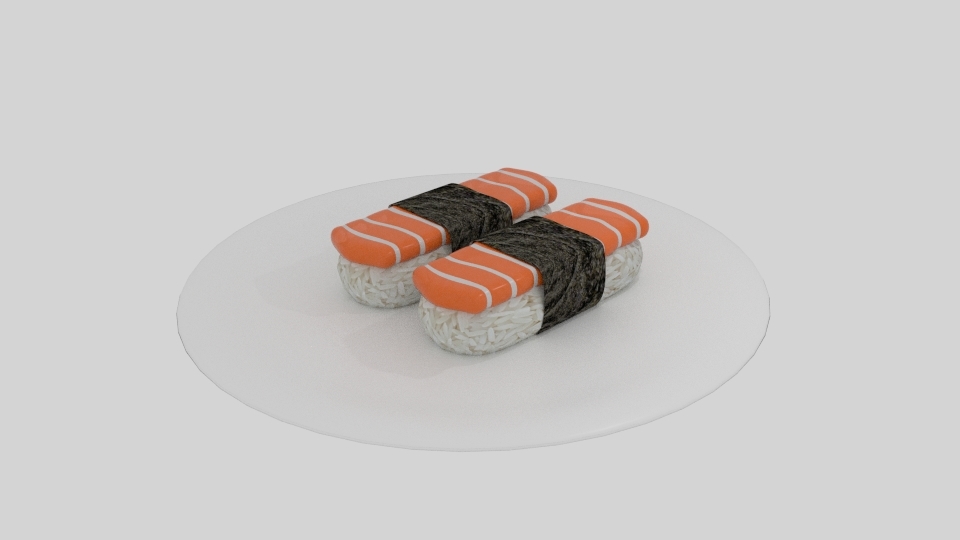 In applications such as automotive, this may include the ability to customize the car's interior to suit the comfort of the driver, or in other retail applications, the shoe may be entirely custom-designed, with a unique fit offered upon request.
In applications such as automotive, this may include the ability to customize the car's interior to suit the comfort of the driver, or in other retail applications, the shoe may be entirely custom-designed, with a unique fit offered upon request.
More importantly, as 3D printing continues to make its way into the medical field, we recognize the incredible potential of medical patient guides and 3D printed models for diagnosis and treatment, not to mention the promising future of 3D printing of human organs. who have little chance of rejection and should not be made available through a harrowing waiting list. nine0005
Want to learn more about Open Meals? Visit their website or Wagashi to learn about their nature-inspired 3D prints.
Source
Other materials:
- Cummins Uses Geomagic Software and Metal 3D Printing to Speed Up a 1952 Race Car
- PHYSNA Releases THANGS, the World's Most Powerful Geometric Search Engine for 3D Models
- Scientists have created a reactor from a microwave oven.
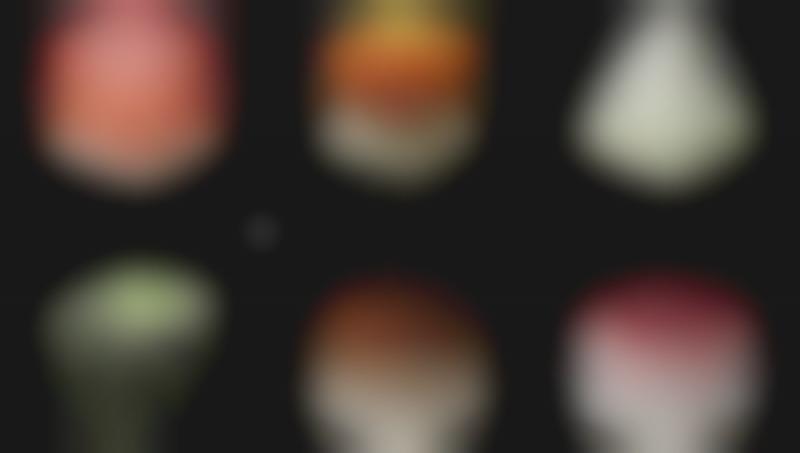 So they got new materials
So they got new materials - The longest bridge printed on a 3D printer in China
- Real application: 3D scanning in orthopedic practice
Attention!
We accept news, articles or press releases
with links and images. [email protected]
nine0000 Japanese technologist spoke about the prospects for creating food on a 3D printer
https://ria.ru/20200121/1563661794.html 3D printer - RIA Novosti, 01/21/2020
Japanese technologist spoke about the prospects for creating food on a 3D printer technologist who developed ... RIA Novosti, 01/21/2020
2020-01-21T11: 13
2020-01-21T11: 13
2020-01-21T11: 13
Tokyo
Japan
Opening-RIA Science
DentSU
/HTML/Head/META/META [@name='og:title']/@content
/html/head/meta[@name='og:description']/@content
https://cdnn21.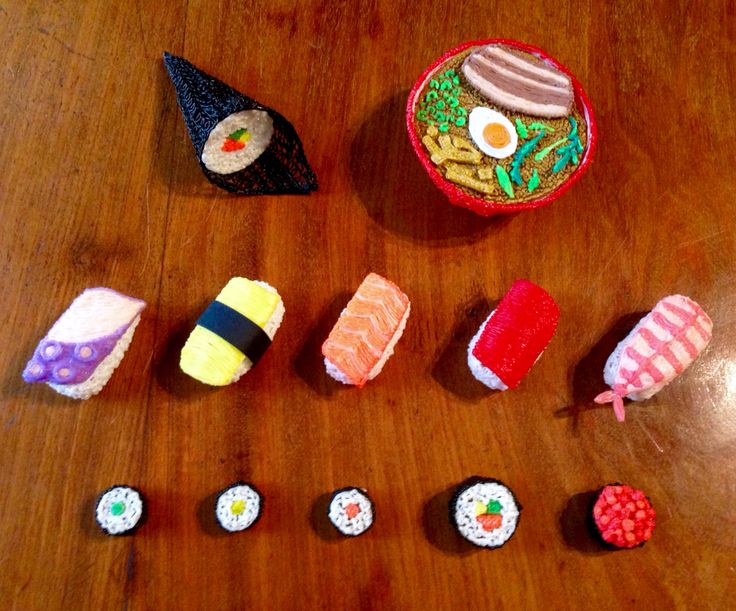 img.ria.ru/images/ 156365/71/1563657101_0:256:2730:1792_1920x0_80_0_0_7be062b4ea236a834a7dca62d29df1e8.jpg
img.ria.ru/images/ 156365/71/1563657101_0:256:2730:1792_1920x0_80_0_0_7be062b4ea236a834a7dca62d29df1e8.jpg
TOKYO, January 21 - RIA Novosti, Ivan Zakharchenko. Creating delicious and cheap food on a 3D printer will be possible no earlier than in 30 years, a Japanese designer and technologist who has developed a fundamentally new technology for making a traditional dish in his country - sushi, told RIA Novosti. The art director of the Japanese corporation Dentsu Ryosuke Sakaki admits that the products "printed" according to its technology are still inferior to traditional sushi. According to him, it still takes time for the project to be commercially successful and economically profitable. "I think that within five years, printing products on a printer will be expensive. But as technology develops and the number of consumers of such products increases, probably, printed sushi will become cheaper regular ones,” says Sakaki. “In order to achieve the same quality of sushi as natural, it may take another thirty years on the printer.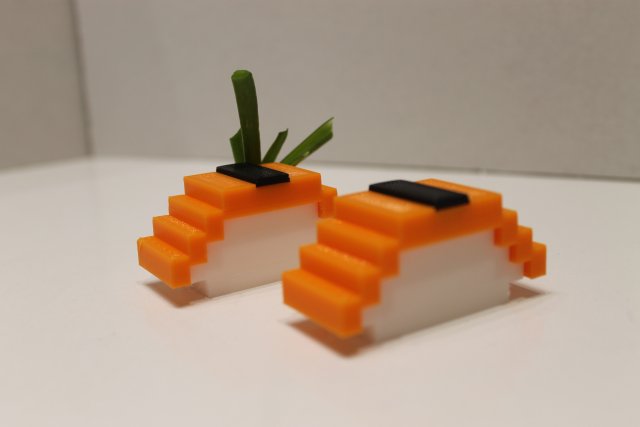 In order for it to be tasty, you need the proper texture, and this is very difficult. this is very difficult to achieve with 3D printers right now. We need printers that print at the cellular and molecular levels,” said Sakaki. quality. Until relatively recently, few people imagined that digital photography could replace film photography, not to mention scanning and making researches of volume objects by 3D-printers. Sakaki decided to go even further and created a fundamentally new concept of food production. "To print any photo or image on a conventional printer, you need a combination of four colors - red, blue, yellow and black, and for food you need a combination of sweet, sour, salty and bitter tastes ", - explains the designer. According to him, "using inkjet printing technology, it is possible to replace ink with, for example, soy sauce, sake, vinegar, and in combination with other products, program changes in tastes." , rice flour, soy mass, algae, spices, food coloring, vitamins.
In order for it to be tasty, you need the proper texture, and this is very difficult. this is very difficult to achieve with 3D printers right now. We need printers that print at the cellular and molecular levels,” said Sakaki. quality. Until relatively recently, few people imagined that digital photography could replace film photography, not to mention scanning and making researches of volume objects by 3D-printers. Sakaki decided to go even further and created a fundamentally new concept of food production. "To print any photo or image on a conventional printer, you need a combination of four colors - red, blue, yellow and black, and for food you need a combination of sweet, sour, salty and bitter tastes ", - explains the designer. According to him, "using inkjet printing technology, it is possible to replace ink with, for example, soy sauce, sake, vinegar, and in combination with other products, program changes in tastes." , rice flour, soy mass, algae, spices, food coloring, vitamins. From them, with the help of a printer and a robot arm, cubic miniatures of various shapes are created that ordinary sushi masters cannot create man-made. For example, sushi in the form of an old castle. To create this technology, Sakaki created the Open Meals project, bringing together twenty people - designers, technologists, programmers, scientists and entrepreneurs. This year, a 3D printer is planned to be introduced in one of the restaurants in Tokyo to make products. Now you can already create imitation meat using soy mass and fats, as well as desserts and ice cream in very beautiful forms. "Our team is mainly engaged in sushi printers, but within the framework of the Open Meals project, a common concept has been created to combine food, technology and art into a single whole We thus think to create the food of the future," Sakaki stressed. nine0005
From them, with the help of a printer and a robot arm, cubic miniatures of various shapes are created that ordinary sushi masters cannot create man-made. For example, sushi in the form of an old castle. To create this technology, Sakaki created the Open Meals project, bringing together twenty people - designers, technologists, programmers, scientists and entrepreneurs. This year, a 3D printer is planned to be introduced in one of the restaurants in Tokyo to make products. Now you can already create imitation meat using soy mass and fats, as well as desserts and ice cream in very beautiful forms. "Our team is mainly engaged in sushi printers, but within the framework of the Open Meals project, a common concept has been created to combine food, technology and art into a single whole We thus think to create the food of the future," Sakaki stressed. nine0005
https://ria.ru/20190918/1558801531.html
https://realty.ria.ru/20190913/1558668066.html
https://ria.ru/20190918/1558791251.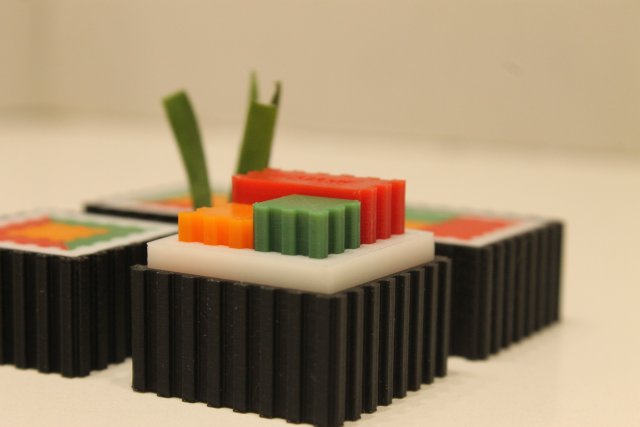 html
html
: //ria.ru/20191113/15608
.html
Tokyo
Japan
RIA Novosti
1
5,00054.7
96
Internet-grian.ru
7 495 645-6601
FSUE MIA Rossiya Segodnya
https://xn--c1acbl2abdlkab1og.xn--p1ai/awards/
2020
RIA Novosti
1
5
4.7
9000
7 495 645-6601 9000 --c1acbl2abdlkab1og.xn--p1ai/awards/
News
en-RU
https://ria.ru/docs/about/copyright.html
https://xn--c1acbl2abdlkab1og.xn-- p1ai/
RIA Novosti
1
5
4.7
9000
7 495 645-6601
FSUE MIA Russia Today "
https: //xn-c1acbl2abdlkab1og.xn-p1ai/avards/
9000 1920 1920 1920 1920 19201080
true
1920
1440
true
https://cdnn21.img.ria.ru/images/156365/71/1563657101_0:0:2730:2048_1920x0_80_0_0_c7b26309801d0e1c6df53125797f5f48. jpg
1920
1920
true
RIA Novosti
1
5
4.7
96 96
7 495 645-6601
FSUE MIA today
https: // XN-C1ACBL2ABDLKab1G. XN-P1AI/ Awards/
RIA Novosti
1
5
4.7
9000
7 495 645-6601
9000 ://xn--c1acbl2abdlkab1og.xn--p1ai/awards/
Tokyo, Japan, discoveries - ria science, dentsu
Tokyo, Japan, discoveries - RIA Nauka, Dentsu
TOKYO, January 21 - RIA Novosti, Ivan Zakharchenko. Creating delicious and cheap food on a 3D printer will not be possible earlier than in 30 years, a Japanese designer and technologist, who has developed a fundamentally new technology for making sushi, a traditional dish in his country, told RIA Novosti.
Ryosuke Sakaki, art director of the Japanese corporation Dentsu, admits that the products "printed" using his technology are still inferior to traditional sushi.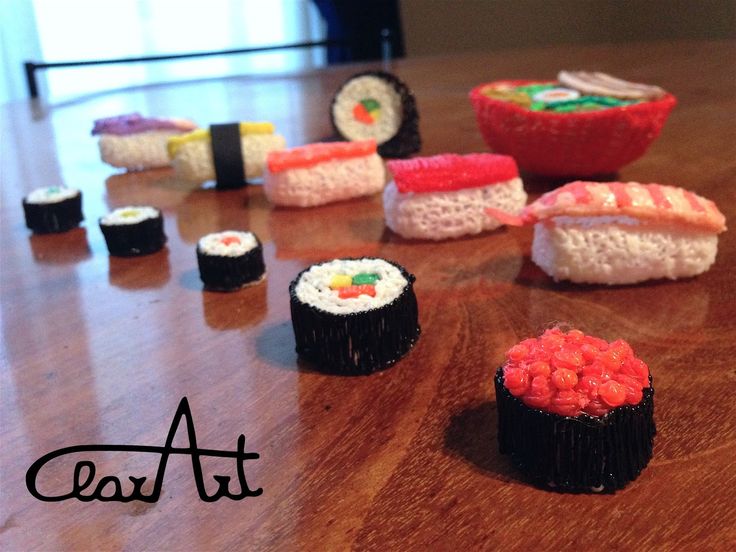 According to him, it still takes time for the project to be a commercial success and an economic benefit. nineSeptember 18, 2019 such products, probably, printed sushi will become cheaper than conventional ones," Sakaki said.
According to him, it still takes time for the project to be a commercial success and an economic benefit. nineSeptember 18, 2019 such products, probably, printed sushi will become cheaper than conventional ones," Sakaki said.
"In order to achieve the same quality of sushi as natural, it can take another thirty years on the printer. In order to be tasty, you need the proper texture, and this is very difficult. In any case, on the 3D printers currently available, this very difficult to achieve. We need printers that print at the cellular and molecular levels," Sakaki said. nine0005
He believes that it is still possible to use a combination of vegetable gelatins such as agar-agar, animal products and already now to recreate a variety of tastes.
September 13, 2019, 16:03100+ Forum Russia 2019
100+ Forum Russia experts will tell you how to print a house on a 3D printer scanning and manufacturing volumetric objects with 3D printers. Sakaki decided to go even further and created a fundamentally new concept of food production. nine0005
Sakaki decided to go even further and created a fundamentally new concept of food production. nine0005
"To print any photo or image on a regular printer, you need a combination of four colors - red, blue, yellow and black, and for food you need a combination of sweet, sour, salty and bitter tastes," explains the designer.
According to him, "using inkjet technology, you can replace ink with, for example, soy sauce, sake, vinegar, and program flavor changes in combination with other products."
September 18, 2019, 03:22 I want to become an astronaut
Russian cosmonauts will print rabbit meat on the ISS using a 3D printer
Ingredients such as gelatins, rice flour, soybean mass, algae, spices, food colorings, vitamins are filled in cartridges of a 3D printer for sushi. From them, with the help of a printer and a robot arm, cubic miniatures of various shapes are created that ordinary sushi masters cannot create man-made. For example, sushi in the form of an old castle.





